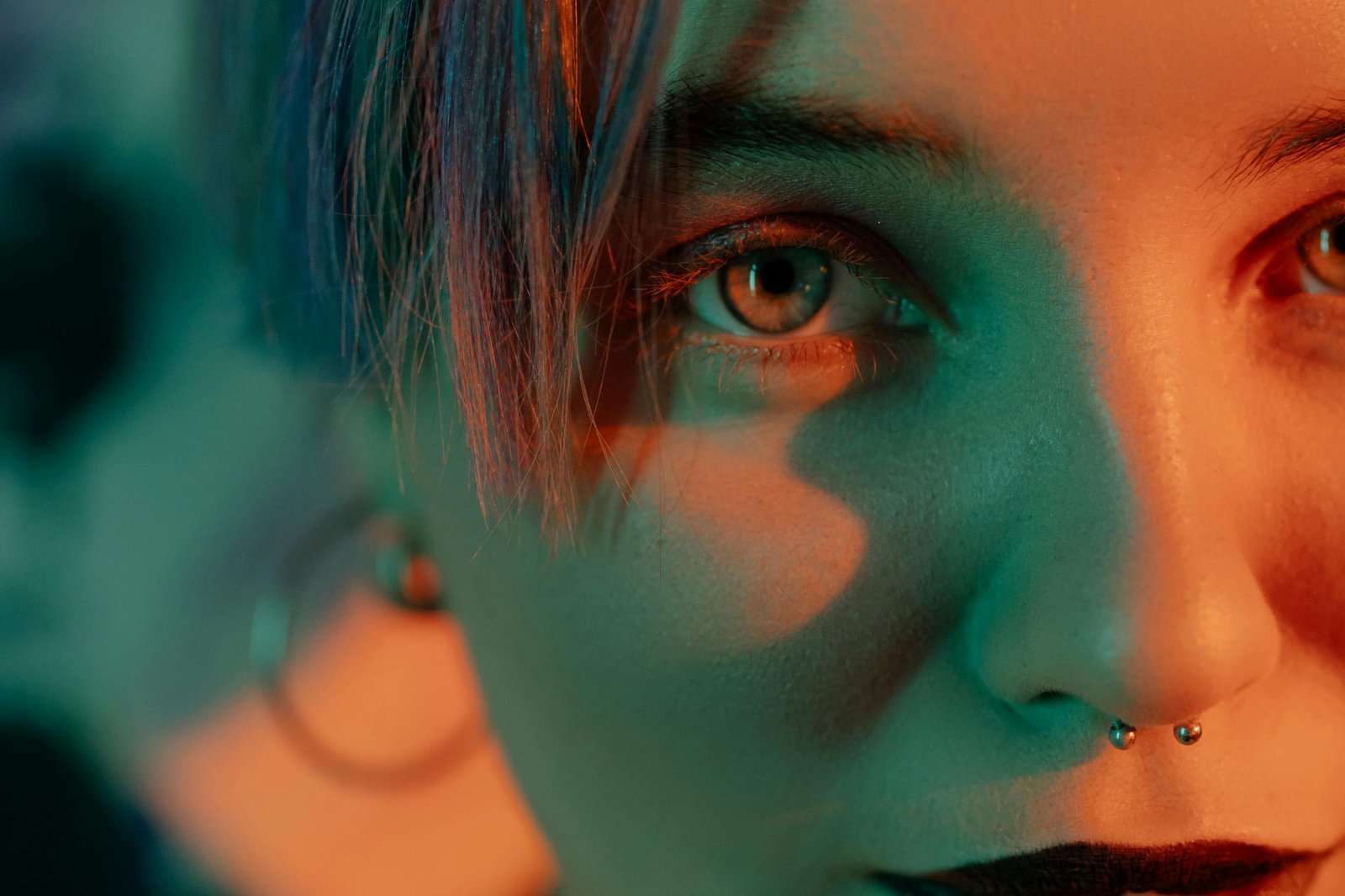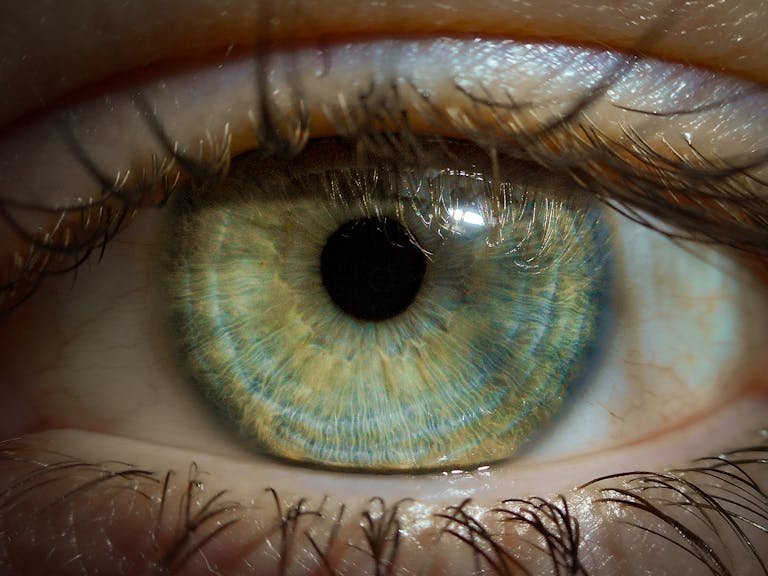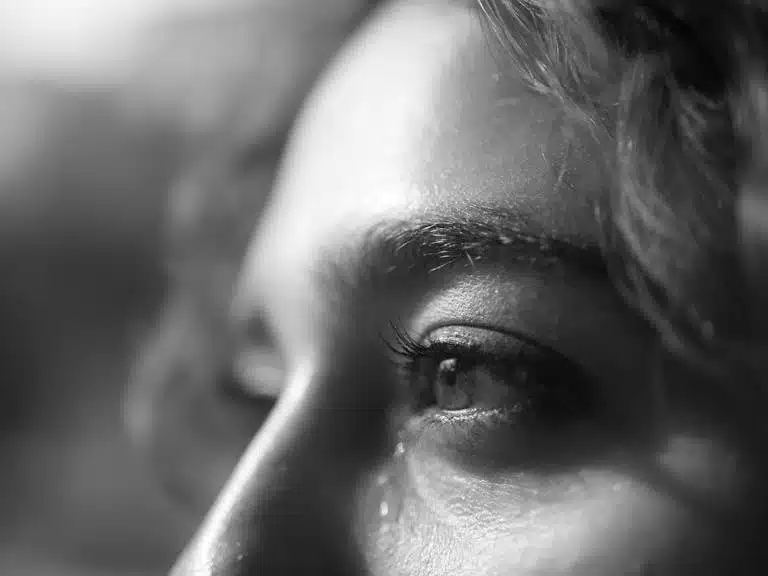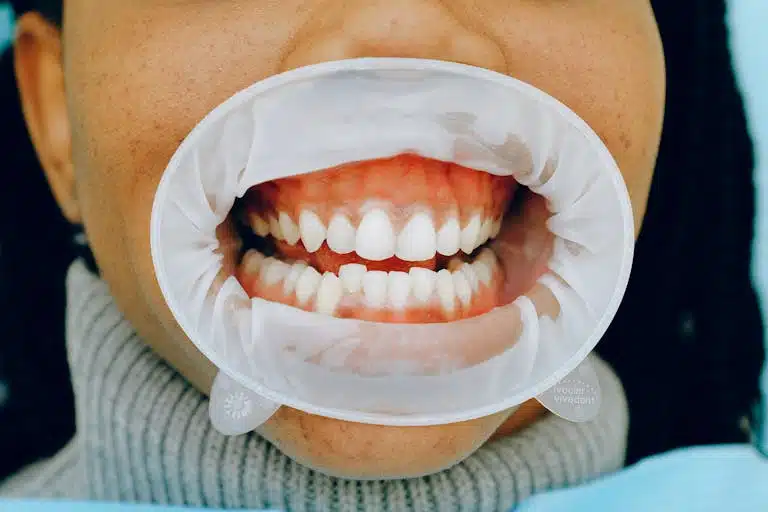What’s Checked in a Comprehensive Eye Exam (2025 Guide)
Have you ever asked yourself, “Is my vision healthy?” Nowadays, after reading this guide, you should be able to know whether your vision is healthy or not. The process of an eye exam goes far beyond reading letters off the chart, as it is a complete check-up of your eyes, spotting anything wrong with vision or even serious diseases such as glaucoma or retinal ailment.
You wear glasses, use contact lenses, or just have never had any problems with your sight ever, a thorough examination of your eyes is something that you cannot afford to miss.
In this detailed guide, I am taking you through a step-by-step procedure of what goes on when a thorough eye test is done. In the end, you ought to be completely prepared and aware of what to expect once you find yourself sitting in that examination seat.
What Is a Comprehensive Eye Exam?
A comprehensive eye exam is an entire test of your sight and general eye condition. I will use special equipment to test your eyes both internally and externally, looking out for disease conditions including but not limited to glaucoma, macular degeneration, and diabetic retinopathy, which display no early signs.
In 30 to 60 minutes, the exam is conducted and is likely to detect severe problems before they can develop and interfere with your vision.
What’s Included in a Comprehensive Eye Exam?
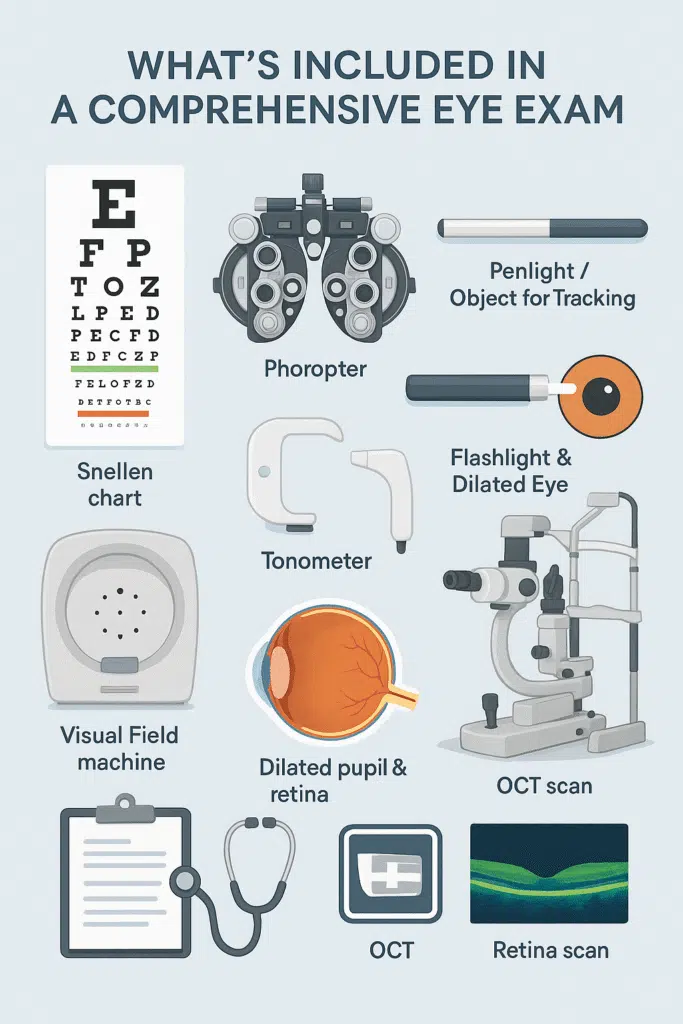
I will take you through each of the steps.
1. Patient History
I will start by undertaking the physical tests.
I’ll ask questions like:
- Do you have difficulties in seeing?
- Do you have a background in eye problems?
- Does your family have any eye diseases?
- Are you ill with such things as diabetes or high blood pressure?
- Which drugs do you take?
- Have you ever had eye operations or treatments?
This initial conversation helps me tailor the exam to your unique situation.
2. Visual Acuity Test
And this is where you may have heard of it: the letters on a chart.
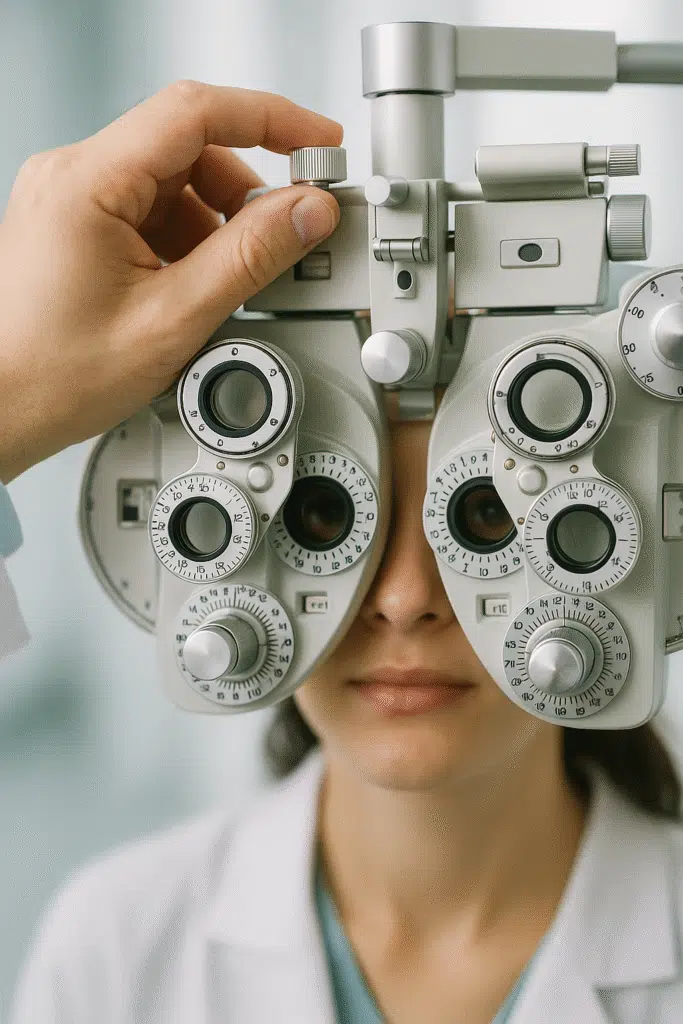
Here, I test:
- Distance examination with the traditional Snellen chart
- Reading with a small text card near-vision
- With and without corrective glasses or contacts
I use this to ascertain the level to which you see and get remedial action.
3. Refraction Test
This question has been asked before, right? Someone would ask, Which is better- 1 or 2? It is a refraction test.
I will change the lenses in front of your eyes to determine the best glasses or contact lens prescription.
This helps identify:
- Nearsightedness (Myopia)
- Farsightedness (Hyperopia)
- Astigmatism
- Presbyopia, which is age-related blurry near vision
This aspect of the test will give you a specific prescription.
4. Eye Muscle Function and Alignment
The test involves the quality of the eyes as they cooperate.
I look for:
- Eye movement ability
- Eye alignment
- Issues like strabismus (crossed eyes) or amblyopia (lazy eye)
I employ small lights and request you to track them to identify any muscle imbalances or problems with tracking.
5. Pupil Response and Neurological Screening
This is where I shine a light into your eyes — not to annoy you, but to observe your pupils.
I evaluate:
- Smaller or bigger pupils and the form of pupils
- Reaction to light
- The potential complications that can present themselves neurologically in terms of pupil behavior
It is a speedy overview of your nervous system through the window of your eyes.
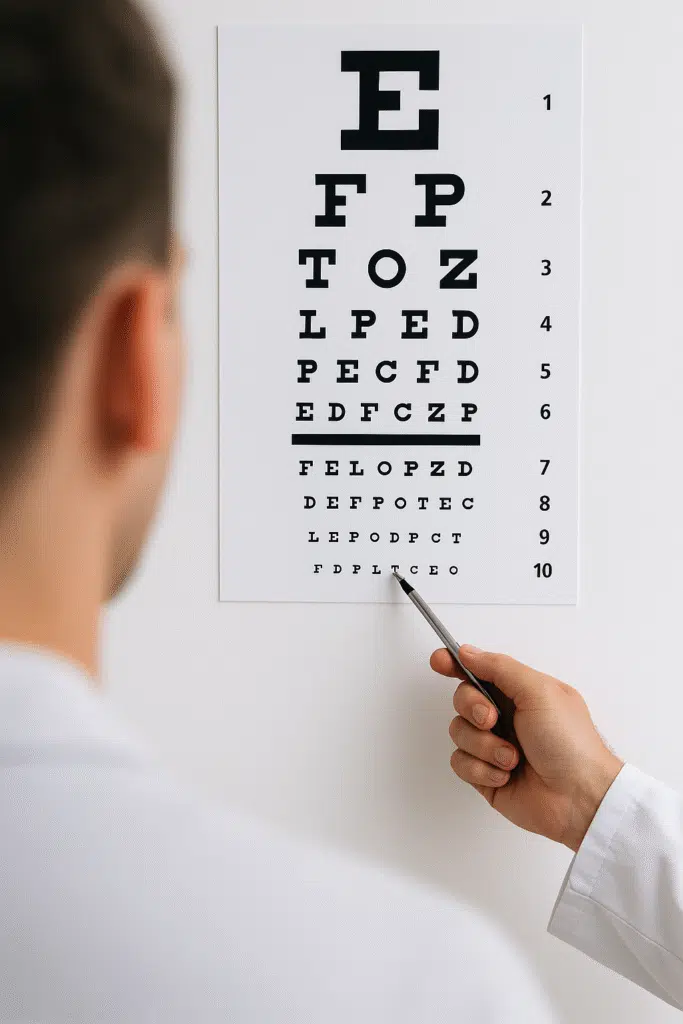
6. Peripheral Vision Test (Visual Field Test)
Your peripheral vision is important, like your central vision. This test helps me detect:
- Glaucoma
- Retinal detachment
- Brain tumors or neurological issues
With a visual field machine, you will be expected to press a button as you detect a strobe of lightning in your sided vision. It is simple, but it could show big things.
7. Intraocular Pressure (IOP) Test
You may have heard of the dreaded “puff test” — that’s one way to measure eye pressure. I may practice tonometry, which may employ the soft probe or the light-based machine that measures the pressure inside your eye.
Glaucoma has a high risk of high pressure.
I do it in nearly every adult and younger patient in case of a family history or symptoms.
Read Also: What’s My Face Shape? Find Out in Seconds!
8. Slit-Lamp Examination
The slit lamp is a microscope and its beam of light is intense allowing me to have a look at the front structures of your eye.
I evaluate:
- Eyelids and lashes
- Conjunctiva (the white of your eye)
- Cornea (the clear front surface)
- Iris and lens
This part helps identify:
- Cataracts
- Dry eye
- Infections
- Corneal injuries
I occasionally stain (with a dye such as fluorescein) so as to bring out defects.
9. Retina and Optic Nerve Exam (Dilated Eye Exam)
Now we go deeper.
I put some special drops of eye drops in your eyes to open the pupils, and then I can see to the back of your eye.
What I examine:
- Retina (light-sensitive layer at the back)
- Macula (responsible for central vision)
- Optic nerve (transmits visual info to the brain)
- Retinal blood vessels
Subsequently, this step aids in identifying the extreme issues such as:
- Macular degeneration
- Diabetic retinopathy
- Optic nerve damage
- Hypertensive changes
Light-sensitive or have a location difficulty for some hours, and, therefore, you should not drive instantly after relapsing.
10. Retinal Imaging and OCT (Optional)
Others provide digital retinal photography and OCT (Optical Coherence Tomography) in some clinics
These tools let me:
- Take high-definition photos of your retina
- Turn on the cross-sectional layers of the retina to see it in detail
- Track changes over time
I tend to prescribe these on the following grounds:
- Diabetic patients
- Older adults
- People with high eye pressure
- Those with a family history of eye disease
They may not necessarily belong in a typical exam, but they are game changers in early detection and monitoring.
Why Regular Eye Exams Matter
Although your vision might appear flawless, I cannot emphasize this enough: thorough check-ups of the eye are crucial.
Most severe diseases, such as glaucoma or degenerative macular disease, cause no symptoms in the beginning. When you realize the changes, it can be too late, and the damage can be irreversible.
I will be able to detect through an exam:
- Your diabetic or high blood pressure eye symptoms
- Such neurological issues as the MS or a brain tumor
- Autoimmune diseases
The health eyes provide the window to your health.
How Often Should You Get a Comprehensive Eye Exam?
Here’s what I recommend:
- Children (6 months – 18 years): Repeat at 6 months, 3 years, before 1 st grade, every 1 to 2 years
- Adults (18 – 60 years): Every 1-2 years
- Seniors (60+): Annually
- Before or during a yearly check-up. It is not necessary to wait until you have any symptoms to get your exam.
FAQs About Comprehensive Eye Exams
What makes a comprehensive eye exam different?
A comprehensive exam is a full examination that examines all of it – the way you see, the condition of the retina, intraocular pressure, and initial symptoms of the disease.
Do I need one if I’m fine?
Yes! Most of the eye problems arise in an asymptomatic manner. Even when you do not feel that something improves with your eyesight, a normal examination will be able to detect issues at an early stage.
How often should I get checked?
- Every 1–2 years for adults under 60.
- Every year, when you are 60+ or experience health-related issues such as diabetes or hypertension.
Read Also: LASIK Eye Surgery Cost in Top USA Hospitals – Compare Now!
Final Words
Every day, you rely on your eyes to do so much, and yet everyone puts it off until something goes wrong to give them the attention they deserve. An eye exam is not all about changing glasses, but it is about securing your vision for tomorrow.
Being a person who has assisted hundreds of patients in identifying problems early, I understand the importance of in-depth, frequent eye exams. In case you do not have one in the recent past, this is your cue.

